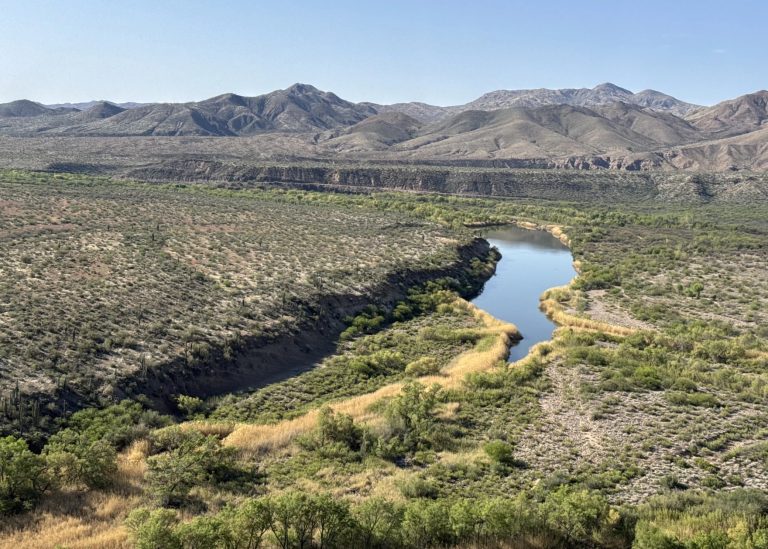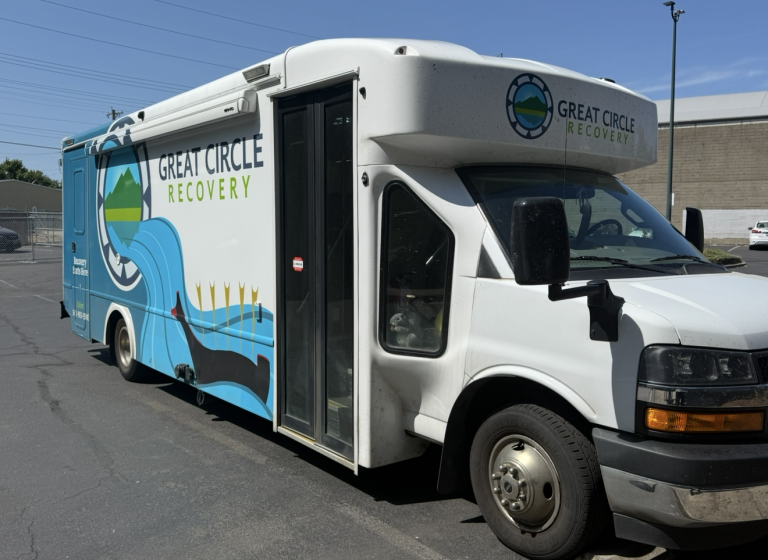Podcast: Play in new window | Download | Embed
![]()
In the 1970s, in Cook Inlet in the Anchorage area, thousands of beluga whales could be seen – so many whales, that you could feasibly walk across their backs without falling into the water.
That’s according to Mandy Migura, an author of a map studying the challenges Cook Inlet whales face today.
Four decades later, Migura says you’d be lucky to see seven whales at a time, as Hannah Bisset from our flagship station KNBA reports.
The population stands at around 280 as of 2018, according to the Marine Mammal Commission.
“We’ve lost over a thousand belugas in this population… that’s a huge, significant loss.”
Migura is the author of the project, which is focused on pinpointing the reasons why this might be happening to the belugas.
According to Migura, the population decline is due to several factors that can be categorized as point-source pollution and non-point-source pollution.
Point-source polluters have a permit and pollution comes from a known source.
“That would be things such as wastewater treatment facilities, stormwater drains, seafood discharges.”
Non-point-source polluters don’t have a single point of the entrance like point-source polluters.
“Examples of that would be runoff from roads or on the airport or when it rains or when the snow melts, that all just kind of runs into the inlet.”
These threats are building up for the whales, causing issues like food insecurity, compromised immunity, and noise distractions that serve as a death by a thousand cuts.
According to Migura, over long-term exposure, these factors will continue to decrease the population we see today.
 Catching up with U.S. Rep. Mary Peltola (Yup’ik/D-AK), who was sworn into office in January.
Catching up with U.S. Rep. Mary Peltola (Yup’ik/D-AK), who was sworn into office in January.
She’s the first-ever Alaska Native person to represent the state in Congress.
Rep. Peltola was recently at the U.S. Capitol for the annual Alaska Week.
She says she was able to discuss many important matters, including key Alaska Federation of Natives issues.
“We talked about a lot of high-level things. AFN is so good at helping frame our priorities as the largest statewide native political organization, they’re really good at looking at things kind of zooming out, looking at things not beyond just details and beyond just regional issues. They’re really looking at Alaska in terms of our place globally.”
Rep. Peltola is addressing a number of priorities for her home state such as fishing, Medicare and Medicaid, and marginalized groups in Alaska.

Activists from the Alaska Coalition on Housing and Homelessness and the Anchorage Coalition to End Homelessness discussed the current housing crisis and state of homelessness in Alaska with the office of Rep. Peltola during Alaska Week.
“I think we need to be thinking about veterans, thinking about elders, really thinking about our young people. We need to be looking for solutions on our homeless. 40% of people living in Alaska who do not have a house are children. As an elected person, it really does impact everybody, and I want to be one of the people at the table coming up with solutions.”
Rep. Peltola’s next goal is to continue prioritizing protecting fish and reducing bycatch by tracking National Oceanic and Atmospheric Administration expected revisions to some of national standards which govern allocation and fishery dependent community participation.
 Alaska Native artist Crystal Worl’s work will soon be on a postage stamp, as KNBA’s Rhonda McBride reports.
Alaska Native artist Crystal Worl’s work will soon be on a postage stamp, as KNBA’s Rhonda McBride reports.
The U.S. Postal Service (USPS) is officially launching a set of four stamps called “The Art of the Skateboard.”
Worl’s illustration showcases the Northwest Coast Formline style of design, which she is known for.
Worl, who’s Lingít and Athabascan, used blue and indigo colors to depict a salmon, which she says is important to Alaska Natives, because it’s fed them for thousands of years.
Worl is not the first Alaska Native to have her art featured on a stamp.
Her brother Rico designed a raven stamp for USPS two years ago.
The two are business partners who sell their designs on t-shirts, jewelry, playing cards, and even snowboards.
Get National Native News delivered to your inbox daily. Sign up for our newsletter today




I think an unrecognized factor in the Beluga decline is Northern Pike taking over the Mat-Su Valley drainages. I am most familiar with Red Shirt Lake, which used to have a robust red salmon run before the pike arrived. That run disappeared within a very few years of the pikes’ arrival. multiply that by all of the lakes and streams and a major source of food for the Belugas has disappeared.